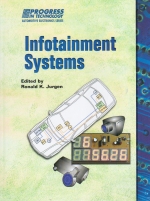Tab Article
The field of in-vehicle infotainment systems covers a wide variety of digital applications, including internal connectivity, entertainment, external communications, navigation services, and radio. This book contains 87 papers covering the past eight years (2000-2007) of engineering developments related to infotainment systems.
Subjects covered include:
- Enabling technologies
- Software
- Communications
- Voice recognition
- Speech synthesis
- Displays
- Radio systems
- Driver assistance systems
- Navigation
- Lane departure warning
- Parallel parking
- Driver/Vehicle interfaces
The book also includes editor Ronald K. Jurgen's introduction ("Infotainment Systems on Fast Forward") and a concluding section on "future trends" which features papers on future security needs, virtualization architectures, operating system requirements, network architectures, and data-reduction protocols.


